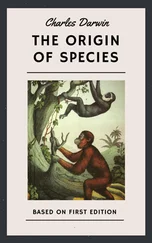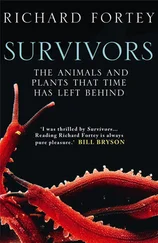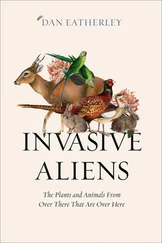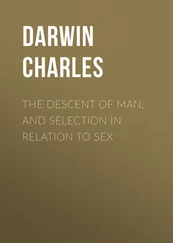Charles Darwin - The Variation of Animals and Plants under Domestication — Volume 2
Здесь есть возможность читать онлайн «Charles Darwin - The Variation of Animals and Plants under Domestication — Volume 2» — ознакомительный отрывок электронной книги совершенно бесплатно, а после прочтения отрывка купить полную версию. В некоторых случаях можно слушать аудио, скачать через торрент в формате fb2 и присутствует краткое содержание. Жанр: foreign_antique, foreign_prose, на английском языке. Описание произведения, (предисловие) а так же отзывы посетителей доступны на портале библиотеки ЛибКат.
- Название:The Variation of Animals and Plants under Domestication — Volume 2
- Автор:
- Жанр:
- Год:неизвестен
- ISBN:нет данных
- Рейтинг книги:3 / 5. Голосов: 1
-
Избранное:Добавить в избранное
- Отзывы:
-
Ваша оценка:
- 60
- 1
- 2
- 3
- 4
- 5
The Variation of Animals and Plants under Domestication — Volume 2: краткое содержание, описание и аннотация
Предлагаем к чтению аннотацию, описание, краткое содержание или предисловие (зависит от того, что написал сам автор книги «The Variation of Animals and Plants under Domestication — Volume 2»). Если вы не нашли необходимую информацию о книге — напишите в комментариях, мы постараемся отыскать её.
The Variation of Animals and Plants under Domestication — Volume 2 — читать онлайн ознакомительный отрывок
Ниже представлен текст книги, разбитый по страницам. Система сохранения места последней прочитанной страницы, позволяет с удобством читать онлайн бесплатно книгу «The Variation of Animals and Plants under Domestication — Volume 2», без необходимости каждый раз заново искать на чём Вы остановились. Поставьте закладку, и сможете в любой момент перейти на страницу, на которой закончили чтение.
Интервал:
Закладка:
Gartner further states that reversions rarely occur with hybrid plants raised from species which have not been cultivated, whilst, with those which have been long cultivated, they are of frequent occurrence. This conclusion explains a curious discrepancy: Max Wichura (13/52. 'Die Bastardbefruchtung... der Weiden' 1865 s. 23. For Gartner's remarks on this head, see 'Bastarderzeugung' s. 474, 582.) who worked exclusively on willows which had not been subjected to culture, never saw an instance of reversion; and he goes so far as to suspect that the careful Gartner had not sufficiently protected his hybrids from the pollen of the parent-species: Naudin, on the other hand, who chiefly experimented on cucurbitaceous and other cultivated plants, insists more strenuously than any other author on the tendency to reversion in all hybrids. The conclusion that the condition of the parent-species, as affected by culture, is one of the proximate causes leading to reversion, agrees well with the converse case of domesticated animals and cultivated plants being liable to reversion when they become feral; for in both cases the organisation or constitution must be disturbed, though in a very different way. (13/53. Prof. Weismann in his very curious essay on the different forms produced by the same species of butterfly at different seasons ('Saison- Dimorphismus der Schmetterlinge' pages 27, 28), has come to a similar conclusion, namely, that any cause which disturbs the organisation, such as the exposure of the cocoons to heat or even to much shaking, gives a tendency to reversion.)
Finally, we have seen that characters often reappear in purely-bred races without our being able to assign any proximate cause; but when they become feral this is either indirectly or directly induced by the change in their conditions of life. With crossed breeds, the act of crossing in itself certainly leads to the recovery of long-lost characters, as well as of those derived from either parent-form. Changed conditions, consequent on cultivation, and the relative position of buds, flowers, and seeds on the plant, all apparently aid in giving this same tendency. Reversion may occur either through seminal or bud generation, generally at birth, but sometimes only with an advance of age. Segments or portions of the individual may alone be thus affected. That a being should be born resembling in certain characters an ancestor removed by two or three, and in some cases by hundreds or even thousands of generations, is assuredly a wonderful fact. In these cases the child is commonly said to inherit such characters directly from its grandparent, or more remote ancestors. But this view is hardly conceivable. If, however, we suppose that every character is derived exclusively from the father or mother, but that many characters lie latent or dormant in both parents during a long succession of generations, the foregoing facts are intelligible. In what manner characters may be conceived to lie latent, will be considered in a future chapter to which I have lately alluded.
LATENT CHARACTERS.
But I must explain what is meant by characters lying latent. The most obvious illustration is afforded by secondary sexual characters. In every female all the secondary male characters, and in every male all the secondary female characters, apparently exist in a latent state, ready to be evolved under certain conditions. It is well known that a large number of female birds, such as fowls, various pheasants, partridges, peahens, ducks, etc., when old or diseased, or when operated on, assume many or all of the secondary male characters of their species. In the case of the hen-pheasant this has been observed to occur far more frequently during certain years than during others. (13/54. Yarrell 'Phil. Transact.' 1827 page 268; Dr. Hamilton in 'Proc. Zoolog. Soc.' 1862 page 23.) A duck ten years old has been known to assume both the perfect winter and summer plumage of the drake. (13/55. 'Archiv. Skand. Beitrage zur Naturgesch.' 8 s. 397-413.) Waterton (13/56. In his 'Essays on Nat. Hist.' 1838 Mr. Hewitt gives analogous cases with hen- pheasants in 'Journal of Horticulture' July 12, 1864 page 37. Isidore Geoffroy Saint-Hilaire in his 'Essais de Zoolog. Gen.' ('Suites a Buffon' 1842 pages 496-513), has collected such cases in ten different kinds of birds. It appears that Aristotle was well aware of the change in mental disposition in old hens. The case of the female deer acquiring horns is given at page 513.) gives a curious case of a hen which had ceased laying, and had assumed the plumage, voice, spurs, and warlike disposition of the cock; when opposed to an enemy she would erect her hackles and show fight. Thus every character, even to the instinct and manner of fighting, must have lain dormant in this hen as long as her ovaria continued to act. The females of two kinds of deer, when old, have been known to acquire horns; and, as Hunter has remarked, we see something of an analogous nature in the human species.
On the other hand, with male animals, it is notorious that the secondary sexual characters are more or less completely lost when they are subjected to castration. Thus, if the operation be performed on a young cock, he never, as Yarrell states, crows again; the comb, wattles, and spurs do not grow to their full size, and the hackles assume an intermediate appearance between true hackles and the feathers of the hen. Cases are recorded of confinement, which often affects the reproductive system, causing analogous results. But characters properly confined to the female are likewise acquired by the male; the capon takes to sitting on eggs, and will bring up chickens; and what is more curious, the utterly sterile male hybrids from the pheasant and the fowl act in the same manner, "their delight being to watch when the hens leave their nests, and to take on themselves the office of a sitter." (13/57. 'Cottage Gardener' 1860 page 379.) That admirable observer Reaumur (13/58. 'Art de faire Eclore' etc. 1749 tome 2 page 8.) asserts that a cock, by being long confined in solitude and darkness, can be taught to take charge of young chickens; he then utters a peculiar cry, and retains during his whole life this newly acquired maternal instinct. The many well-ascertained cases of various male mammals giving milk shows that their rudimentary mammary glands retain this capacity in a latent condition.
We thus see that in many, probably in all cases, the secondary characters of each sex lie dormant or latent in the opposite sex, ready to be evolved under peculiar circumstances. We can thus understand how, for instance, it is possible for a good milking cow to transmit her good qualities through her male offspring to future generations; for we may confidently believe that these qualities are present, though latent, in the males of each generation. So it is with the game-cock, who can transmit his superiority in courage and vigour through his female to his male offspring; and with man it is known (13/59. Sir H. Holland 'Medical Notes and Reflections' 3rd edition 1855 page 31.) that diseases, such as hydrocele, necessarily confined to the male sex, can be transmitted through the female to the grandson. Such cases as these offer, as was remarked at the commencement of this chapter, the simplest possible examples of reversion; and they are intelligible on the belief that characters common to the grandparent and grandchild of the same sex are present, though latent, in the intermediate parent of the opposite sex.
The subject of latent characters is so important, as we shall see in a future chapter, that I will give another illustration. Many animals have the right and left sides of their body unequally developed: this is well known to be the case with flat-fish, in which the one side differs in thickness and colour and in the shape of the fins, from the other, and during the growth of the young fish one eye is gradually twisted from the lower to the upper surface. (13/60. See Steenstrup on the 'Obliquity of Flounders' in Annals and Mag. of Nat. Hist.' May 1865 page 361. I have given an abstract of Malm's explanation of this wonderful phenomenon in the 'Origin of Species' 6th Edition page 186.) In most flat-fishes the left is the blind side, but in some it is the right; though in both cases reversed or "wrong fishes," are occasionally developed; and in Platessa flesus the right or left side is indifferently the upper one. With gasteropods or shell-fish, the right and left sides are extremely unlike; the far greater number of species are dextral, with rare and occasional reversals of development; and some few are normally sinistral; but certain species of Bulimus, and many Achatinellae (13/61. Dr. E. von Martens in 'Annals and Mag. of Nat. Hist.' March 1866 page 209.) are as often sinistral as dextral. I will give an analogous case in the great articulate kingdom: the two sides of Verruca (13/62. Darwin 'Balanidae' Ray Soc. 1854 page 499: see also the appended remarks on the apparently capricious development of the thoracic limbs on the right and left sides in the higher crustaceans.) are so wonderfully unlike, that without careful dissection it is extremely difficult to recognise the corresponding parts on the opposite sides of the body; yet it is apparently a mere matter of chance whether it be the right or the left side that undergoes so singular amount of change. One plant is known to me (13/63. Mormodes ignea: Darwin 'Fertilisation of Orchids' 1862 page 251.) in which the flower, according as it stands on the one or other side of the spike, is unequally developed. In all the foregoing cases the two sides are perfectly symmetrical at an early period of growth. Now, whenever a species is as liable to be unequally developed on the one as on the other side, we may infer that the capacity for such development is present, though latent, in the undeveloped side. And as a reversal of development occasionally occurs in animals of many kinds, this latent capacity is probably very common.
Читать дальшеИнтервал:
Закладка:
Похожие книги на «The Variation of Animals and Plants under Domestication — Volume 2»
Представляем Вашему вниманию похожие книги на «The Variation of Animals and Plants under Domestication — Volume 2» списком для выбора. Мы отобрали схожую по названию и смыслу литературу в надежде предоставить читателям больше вариантов отыскать новые, интересные, ещё непрочитанные произведения.
Обсуждение, отзывы о книге «The Variation of Animals and Plants under Domestication — Volume 2» и просто собственные мнения читателей. Оставьте ваши комментарии, напишите, что Вы думаете о произведении, его смысле или главных героях. Укажите что конкретно понравилось, а что нет, и почему Вы так считаете.












